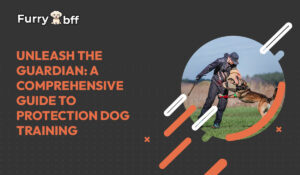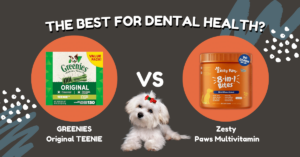Hypoallergenic dog meal plans are designed to meet the nutritional needs of dogs that suffer from food allergies or intolerances. These meal plans are formulated to exclude common allergens such as wheat, corn, soy, and dairy, which can cause skin irritations, digestive issues, and other health problems in dogs. By providing your dog with a hypoallergenic meal plan, you can help alleviate their symptoms and improve their overall health.
Some popular hypoallergenic dog breeds include Chihuahuas, Yorkies, Pomeranians, Shih Tzus, Maltese, Pekingese, Bichon Frises, Papillons, Cavalier King Charles Spaniels, and Poodles (Toy or Miniature). These breeds are known for their small size, fluffy coats, and playful personalities.
II. Factors to consider when choosing a hypoallergenic dog meal plan
When choosing a hypoallergenic dog meal plan, it’s important to consider several factors to ensure that you are providing your dog with the best nutrition possible.
A. Allergies and intolerances: Before choosing a hypoallergenic meal plan, it’s essential to identify your dog’s specific allergies and intolerances. This will help you choose a meal plan that is free from the allergens that cause your dog’s symptoms.
B. Nutritional requirements: Your dog’s nutritional requirements will depend on their age, breed, activity level, and health status. It’s important to choose a hypoallergenic meal plan that meets all of their nutritional needs.
C. Budget: Hypoallergenic dog food can be more expensive than regular dog food. It’s important to consider your budget when choosing a hypoallergenic meal plan.
D. Convenience: Homemade dog food can be time-consuming and require more effort than commercial dog food. It’s important to choose a meal plan that fits your lifestyle and schedule.
III. Types of hypoallergenic dog food
There are several types of hypoallergenic dog food available, including homemade dog food, commercial hypoallergenic dog food, and raw dog food.
A. Homemade dog food: Homemade dog food allows you to have complete control over your dog’s diet and can be tailored to your dog’s specific nutritional needs. However, it can be time-consuming and require more effort than commercial dog food.
B. Commercial hypoallergenic dog food: Commercial hypoallergenic dog food is formulated to exclude common allergens such as wheat, corn, soy, and dairy. These foods can be found in most pet stores and are available in a variety of flavors.
C. Raw dog food: Raw dog food is made from uncooked meats, fruits, and vegetables. This type of food is becoming more popular, but it’s important to note that it can be expensive and may require more preparation time.
IV. Tips for transitioning to a hypoallergenic dog meal plan
When transitioning to a hypoallergenic dog meal plan, it’s important to take things slowly and monitor your dog’s health.
A. Gradual transition: Gradually transition your dog to their new meal plan over the course of a few weeks. This will help their digestive system adjust to the new diet.
B. Monitor your dog’s health: Watch for any signs of discomfort or illness during the transition period. If you notice any negative changes in your dog’s health, contact your veterinarian.
C. Seek advice from a veterinarian: Consult with your veterinarian to ensure that you are providing your dog with the best nutrition possible. They can provide guidance on choosing a hypoallergenic meal plan and monitor your dog’s health during the transition.
V. Conclusion
In conclusion, hypoallergenic dog meal plans are a great option for dogs with food allergies or intolerances. When choosing a meal plan, it’s important to consider your dog’s specific nutritional needs, budget, and lifestyle. By gradually transitioning to a hypoallergenic meal plan and monitoring your dog’s health, you can provide them with the best possible nutrition and alleviate their symptoms. Remember to consult with your veterinarian for advice and guidance on choosing the right hypoallergenic meal plan for your furry friend.
VI. How hypoallergenic dog meal plans are relevant to specific breeds
While hypoallergenic meal plans can be beneficial for all dogs with food allergies or intolerances, they may be particularly relevant to certain breeds. Let’s take a closer look at how hypoallergenic dog meal plans can benefit some of the breeds listed earlier:
- Chihuahua: Chihuahuas are small and often have sensitive stomachs, making them prone to food allergies. A hypoallergenic meal plan can help alleviate any digestive issues and keep them healthy.
- Yorkie: Yorkies are small dogs with long, silky coats that require regular grooming. A hypoallergenic meal plan can help keep their coat healthy and shiny while also addressing any food sensitivities.
- Pomeranian: Pomeranians have thick, fluffy coats that require regular maintenance. A hypoallergenic meal plan can help reduce shedding and promote healthy skin and coat.
- Shih Tzu: Shih Tzus are playful dogs with long, flowing coats that require regular grooming. A hypoallergenic meal plan can help keep their coat healthy and reduce the risk of skin irritations.
- Maltese: Maltese dogs have gentle temperaments and silky white coats. A hypoallergenic meal plan can help keep their coat clean and healthy while also addressing any food sensitivities.
- Pekingese: Pekingese dogs have luxurious coats and independent personalities. A hypoallergenic meal plan can help keep their coat healthy and reduce the risk of skin irritations.
- Bichon Frise: Bichon Frises are happy-go-lucky dogs with fluffy white coats. A hypoallergenic meal plan can help keep their coat healthy and reduce the risk of skin irritations.
- Papillon: Papillons are energetic dogs with butterfly-like ears. A hypoallergenic meal plan can help reduce any digestive issues and keep them healthy and active.
- Cavalier King Charles Spaniel: Cavalier King Charles Spaniels are affectionate and friendly dogs. A hypoallergenic meal plan can help reduce any digestive issues and keep them healthy and happy.
- Poodle (Toy or Miniature): Poodles are intelligent dogs with curly, hypoallergenic coats. A hypoallergenic meal plan can help keep their coat healthy and reduce the risk of skin irritations, while also addressing any food sensitivities.
Overall, hypoallergenic dog meal plans can benefit dogs of all breeds, but may be particularly relevant to those with sensitive stomachs or coats that require regular grooming. By providing your furry friend with the best possible nutrition, you can ensure they lead a happy and healthy life.
The most qusestions we got :
- Is a hypoallergenic diet good for dogs? A hypoallergenic diet can be very beneficial for dogs that suffer from food allergies or sensitivities. By removing common allergens and using alternative protein sources, hypoallergenic diets can help reduce symptoms such as itching, gastrointestinal upset, and ear infections.
- What can my dog eat on a hypoallergenic diet? Hypoallergenic diets usually consist of novel protein and carbohydrate sources that your dog hasn’t eaten before. Common options include duck, venison, lamb, and fish paired with potato, sweet potato, or pea. There are also hydrolyzed protein diets where the protein source has been broken down into smaller components that are less likely to trigger an allergic reaction.
- Are eggs good for hypoallergenic dogs? Eggs are a good source of protein and can be included in some hypoallergenic diets. However, if your dog is allergic to eggs, it should be avoided.
- What foods should hypoallergenic dogs avoid? Hypoallergenic dogs should avoid common allergens such as beef, chicken, dairy, and wheat. Additionally, some dogs may have sensitivities to other ingredients like corn or soy.
- What food should I eat on a hypoallergenic diet? A human hypoallergenic diet would involve avoiding common allergens like wheat, dairy, soy, eggs, peanuts, and shellfish. Instead, focus on eating whole, minimally processed foods like fruits, vegetables, lean meats, and whole grains that your body is less likely to react to.
- Why is chicken not good for dogs with allergies? Chicken is a common allergen for dogs and can cause symptoms such as itching, skin rashes, and ear infections. As a result, many hypoallergenic diets avoid chicken and use alternative protein sources like lamb or fish.
- What meat is hypoallergenic for dogs? Hypoallergenic meats for dogs include novel proteins like duck, venison, rabbit, and kangaroo. Fish is also a good option for dogs with food allergies.
- Can hypoallergenic dogs eat fruit? Fruits are generally safe for hypoallergenic dogs in moderation. However, some dogs may have sensitivities to certain fruits like bananas or citrus fruits, so it’s best to introduce new fruits gradually and monitor for any adverse reactions.
- Are carrots good for hypoallergenic dogs? Yes, carrots are a nutritious and hypoallergenic vegetable that can be included in your dog’s diet. They are a good source of vitamins, fiber, and antioxidants.
- Can hypoallergenic dogs eat bread? It depends on the type of bread. Some dogs may be sensitive to wheat or gluten, which are common ingredients in bread. Hypoallergenic bread options may include those made from alternative flours like almond or coconut flour.
- Are bananas good for dogs with allergies? Bananas are generally considered safe for dogs with allergies, but some dogs may have sensitivities to them. As with any new food, introduce bananas gradually and monitor your dog for any adverse reactions.
- Is salmon good for dogs with allergies? Salmon is a great source of protein and omega-3 fatty acids, which are essential for maintaining your dog’s overall health. However, some dogs may have an allergy to salmon, so it’s important to introduce it slowly and watch for any signs of an adverse reaction. If your dog is not allergic to salmon, it can be a great addition to their hypoallergenic diet.
- Can hypoallergenic dogs eat broccoli? Yes, broccoli is safe for dogs to eat and can be a great addition to a hypoallergenic diet. Broccoli is a good source of vitamins and minerals and is low in calories, making it a healthy treat for your furry friend. However, as with any new food, it’s important to introduce broccoli slowly and in small amounts to ensure your dog doesn’t have an adverse reaction.
- How long does it take for hypoallergenic dog food to work? The time it takes for hypoallergenic dog food to work can vary depending on the individual dog and their specific dietary needs. In some cases, you may notice an improvement in your dog’s symptoms within a few weeks of starting a hypoallergenic diet, while in other cases it may take several months to see a significant improvement. It’s important to be patient and consistent with your dog’s diet, and to work closely with your veterinarian to ensure that your dog is getting the proper nutrition and care they need.









